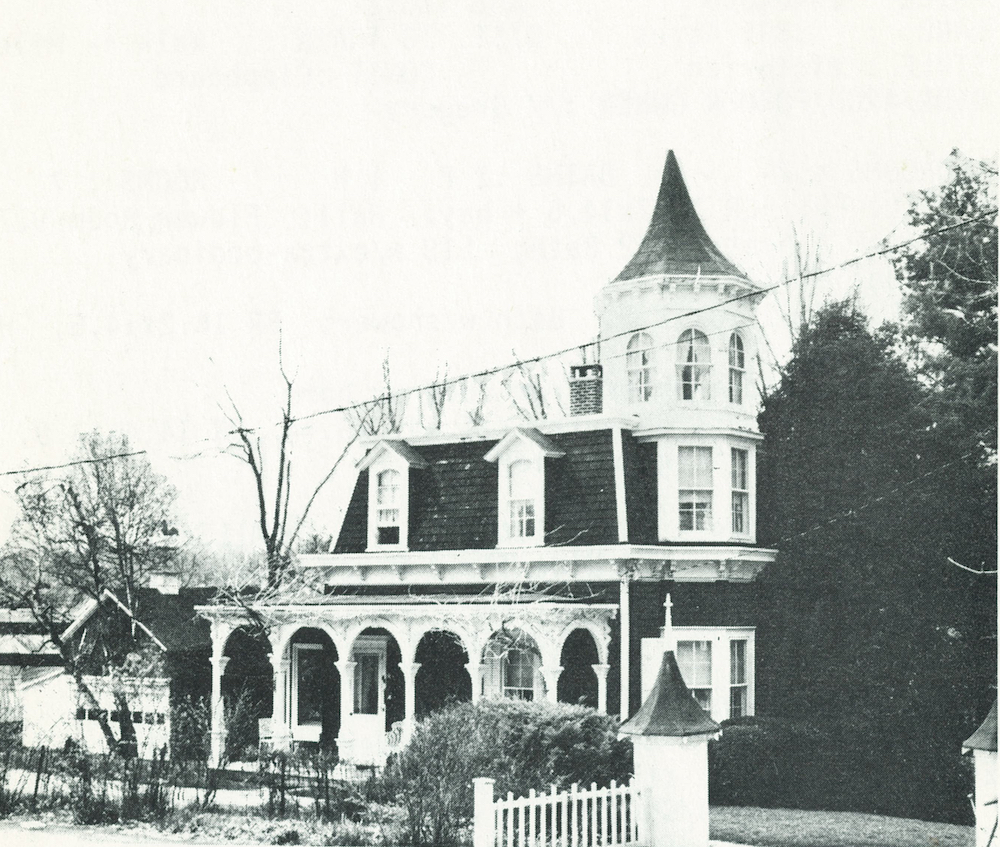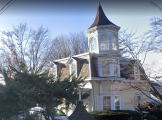66 Seminary St.
‘New Canaan Now & Then’ is sponsored by Brown Harris Stevens Realtors Joanne Santulli, Karen Ceraso, Bettina Hegel and Schuyler Morris.
The house at 66 Seminary Street was built for the first Baptist minister by Watts Comstock, the first president of the New Canaan First National bank and a founder of the First Baptist Society.
The parcel of land was acquired by Hiram Terrell (a house carpenter) in lieu of a debt. Mr. Terrell sold the land to Watts Comstock and although there is no record to prove that any of the Baptist clergy lived at 66 Seminary, according to historian Mary Louise King that was his intention. Comstock deeded the land, new dwelling and barn with another parcel of land to his son Edwin in November 1875.
Seminary Street was designated as a “highway” in the earliest land records and it was later known as “Brooks Street’ because brooks cross under it. It is one of the oldest roads in town. It was laid out in 1738 by the town of Norwalk to connect with what is now Weed Street. It was not until 1858 when Elm Street extended from Park to meet Seminary Street at its west end.
The 1878 map of New Canaan shows that 66 Seminary Street resembled a church with its tall tower, mansard roof, and three small out buildings to the south. An interesting fact about life on Seminary Street is that a large vein of rock, deposited by a glacier, prevented running a water pipe along the street, with the results that those houses on the north side of the road are connected to St. John Place while buildings on the south side pipe from Elm Street. Prior to the formation of the New Canaan Water Company in the late 1890s, the people on Seminary Street had to depend on their wells, which were famous for pure water.
Edwin Comstock lived in Port Jervis, New York at the time the property was deeded to him. Watts Comstock died a year later in 1876. Edwin Comstock sold the property and an additional ¾ acres to James Fairty for $1,000 on October 9, 1879. The Fairty family owned the property until 1951. James Fairty was a shoemaker in New Canaan, and he and his twenty-one year old wife, Mary A. Geddes are listed in the 1860 census as living in Silvermine. Fairty’s business, Fairty and Bliss, operated where the New Canaan Armory was on Main Street (in the rear opposite East Avenue) . When the shoe market declined, Fairty took over the grocery store that was operated by Cyrus Dann on the corner of Main and Elm. James Fairty was a fixture in town and held many public offices, including being the town assessor in 1892, 1895 and 1897. He was also the grand juror in 1875, 1882. 1884, and 1900. After his death on March 24, 1918, the property passed to his wife. When she died on December 13, 1934, the property was deeded to their daughter, Bertha Eliza Gregory. Bertha had married George B. Gregory in 1896.
When Bertha Gregory died on July 11, 1943, a third of the property was inherited by her husband and the remaining two thirds was willed to her only son, Harold F. Gregory of Darien. The Gregorys sold the property to Dorothy Moore Burnham for $8000 on July 10, 1951. Coincidentally, Burnham was living at 1328 Smith Ridge, a 17th century Comstock house at the time she purchased 66 Seminary. Dorothy Burnham’s husband, Addison Center Burnham had died in April 1951. He was the Vice President of W.W. Norton New York Book Publishers and was a member of the New Canaan Democratic Town Committee. Ms. Burnham, a 1922 Skidmore graduate, was also active in local government. She was elected to the Board of Education and served from 1942 to 1946. She was also elected third selectman in 1949. Ms. Burnham was active in the League of Women Voters and a supporter of the NAACP. She is also credited with starting the first Girl Scout Brownie troop in town. Ms. Burnham moved to 66 Seminary with her two sons after she made some necessary improvements to the home.
When Dorothy’s son Daniel was a senior at Harvard in 1952, he was one of ten winners of the “Why Ski” essay contest conducted by the State of Vermont. As a winner, he and his fellow winners enjoyed a week-long, all expense paid trip to various ski resorts in Vermont. Daniel continued his mother’s legacy of being active in politics. He also had a successful career in journalism, owned the local New Hampshire paper, and raised Holstein heifers. His coverage of the civil rights struggles in the south had a big impact on his life. Daniel died in 2020. Dorothy Burnham Woody’s younger son, David, became a reporter after graduating from Harvard University in 1955. He is most famous for working as an investigative reporter for the New York Times from 1968-1986. David’s articles on police corruption are the basis for the 1973 movie Serpico and it was David Burnham that the labor union activist Karen Silkwood was meeting when she mysteriously died. David Burnham is currently the co-director of the Transactional Records Access ClearingHouse, a project for the S.I. Newhouse School of Public Communications at Syracuse University.
In 1961 Ms. Burnham married fellow New Canaan resident Kennerly Woody, who was the vice president of the New York Telephone Company. Woody became the president and chairman of the Woodlawn Cemetery in the Bronx after he retired. He and his wife were listed as “summer residents” because they often rented 66 Seminary while they traveled. In the early 1950s, Ms. Burnham Woody saved a set of files from the incinerator (during a routine cleaning of town hall) that documented all public officer holders from the town’s incorporation in 1801 to after World War II.The files were given to the historical society at that time.
The Woodys sold 66 Seminary to George F. McEvoy Jr. and his wife, Heidi, on July 16, 1986. The Woodys purchased a condominium on Bank Street. In 1987, he applied for a permit to update the 1890 garage so it could be used as a work space for his pottery and installed a kiln. Mr. McEvoy held annual pottery shows at his home for many years.



